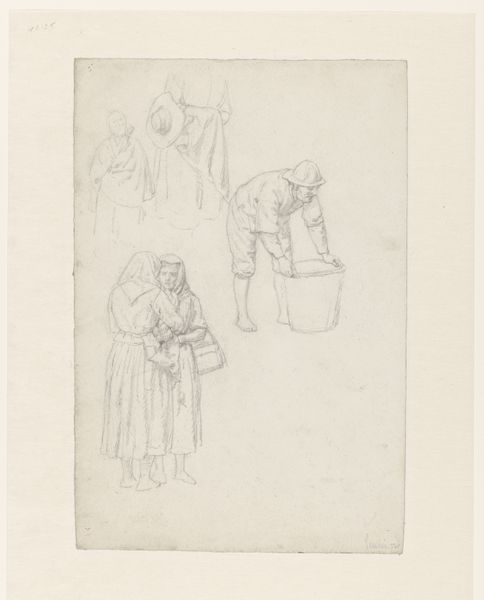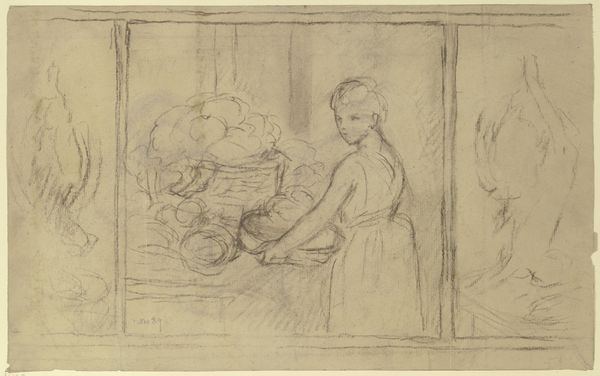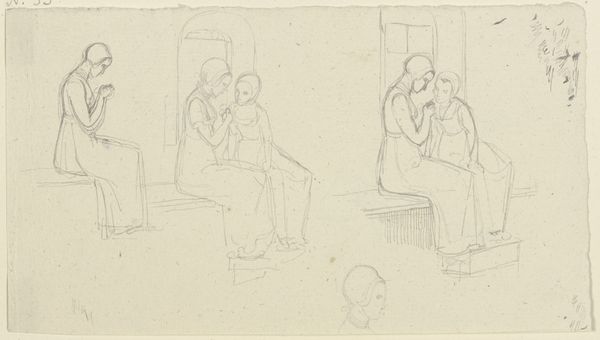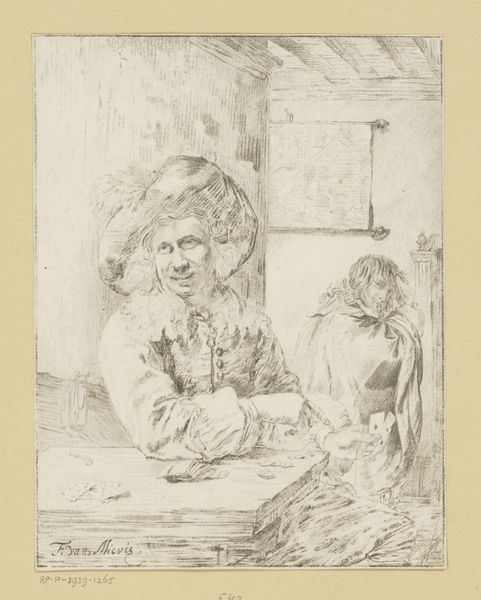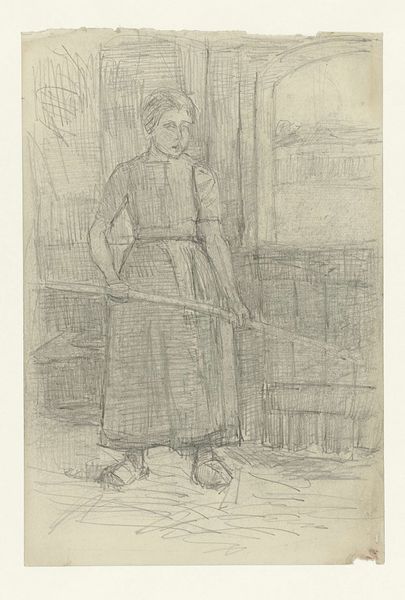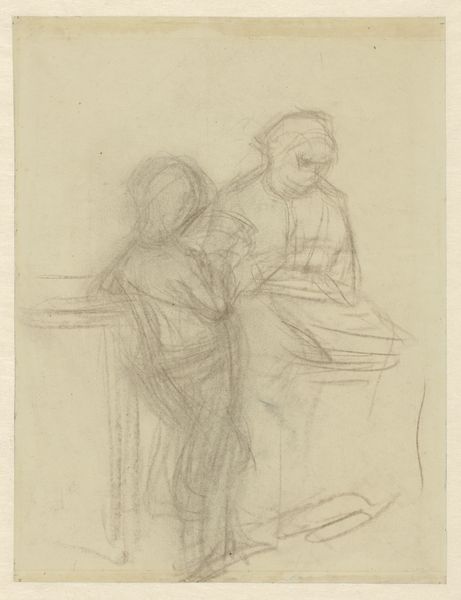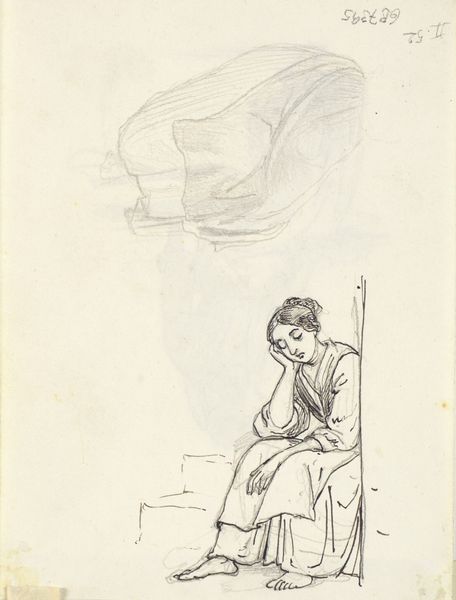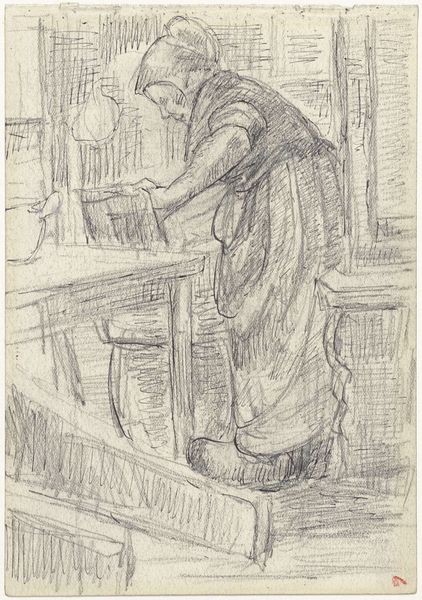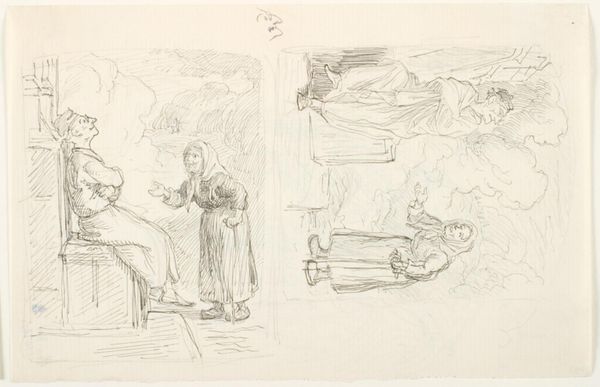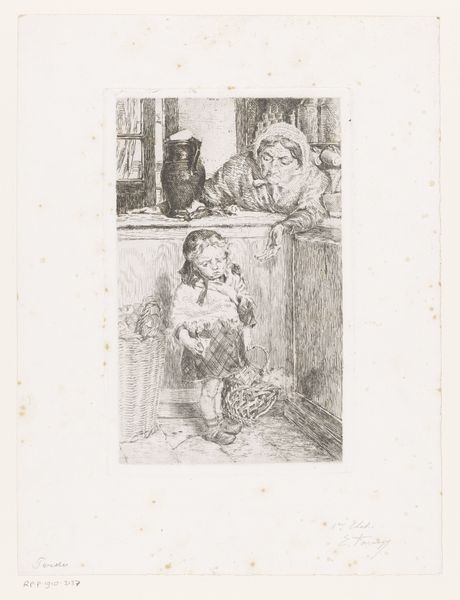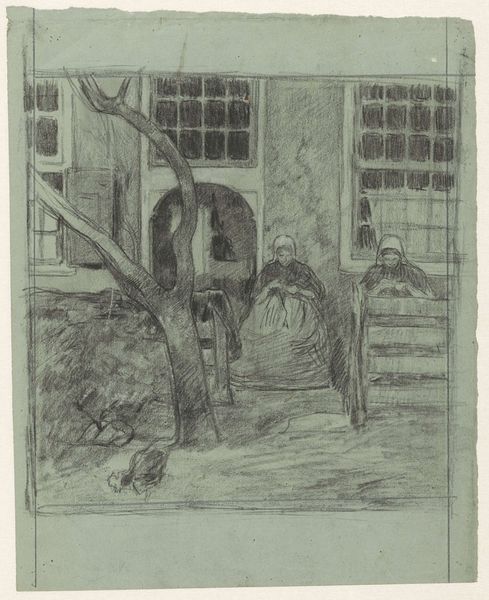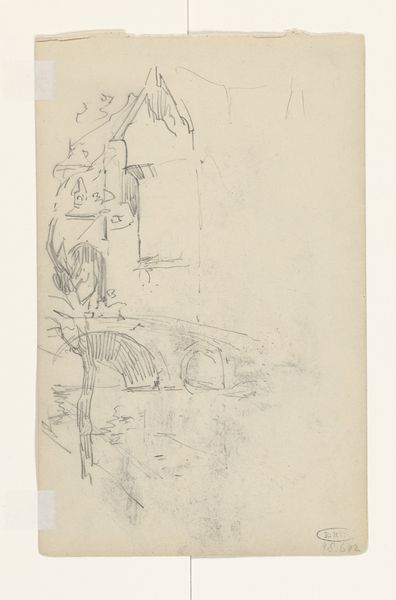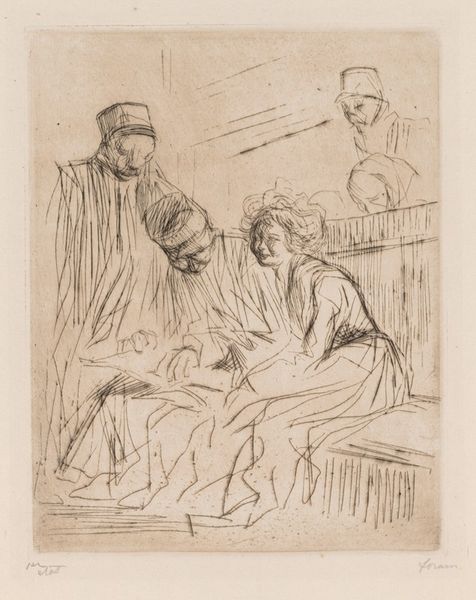
drawing, paper, pencil
#
portrait
#
drawing
#
dutch-golden-age
#
paper
#
pencil
#
genre-painting
#
realism
Dimensions: height 310 mm, width 207 mm
Copyright: Rijks Museum: Open Domain
Curator: Jozef Israëls’ “Studieblad met vrouwen en kinderen,” created between 1834 and 1911, features delicate pencil strokes on paper, housed here at the Rijksmuseum. It presents various studies of women and children in everyday scenes. Editor: There's a certain raw honesty to it. The sketching is direct, capturing candid moments. It has a subtle atmosphere of labor and domesticity. Curator: The sketch highlights the artist's method. Look at the varied line weights – thin, almost ethereal strokes that suggest movement and fleeting moments against thicker, deliberate outlines. We can truly observe his decision making here in what not to emphasize and how those choices affect the reading of space in relation to the figures. Editor: Absolutely, and these scenes become especially powerful when considered within the broader socio-economic conditions of 19th-century Netherlands. Israëls came from a family with mercantile connections and dedicated much of his output to depictions of laborers and those otherwise marginalized in society. His decision to study women and children offers a direct statement about the significance of their often-unseen labor and lived experience. Curator: Exactly! Note the contrast in finish. Some figures appear more resolved than others; yet none of them could really be considered "finished," indicating the drawing's nature as study tool for Israëls and not a finished piece for sale. Editor: I'm struck by how his choice of subject elevates mundane daily tasks. These sketches resist easy sentimentality, confronting viewers with realistic portrayals. You get a sense of these women's resilience and roles in their communities despite, and sometimes because of, limited opportunity and heavy burdens of reproductive labor. Curator: Israëls was deeply invested in showing a certain amount of realism as it related to craftspeople and families like those included here in these groupings. This commitment to making lives normally overlooked now demands renewed conversations about what we consider “high art,” right? Editor: Precisely. It challenges that artifice of “high art”, asking what social value can be created when techniques and methods normally relegated to workshop are used to elevate what those drawing rooms and salons have routinely failed to appreciate in the first place. Curator: It is important to reconsider and reimagine how art intersects with craft and how class and identity have traditionally affected not only art making but interpretation of these visual texts. Editor: And for me, that is the value of continuing conversations that keep these powerful undercurrents in sight.
Comments
No comments
Be the first to comment and join the conversation on the ultimate creative platform.
